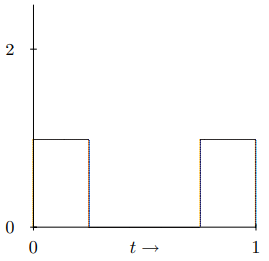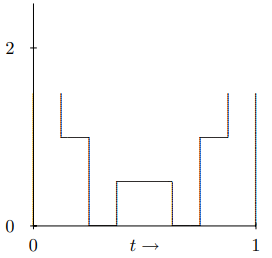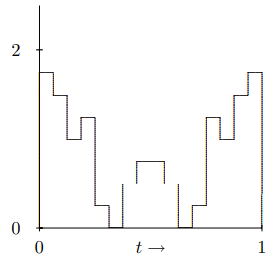6.3: Chapter Checklist
( \newcommand{\kernel}{\mathrm{null}\,}\)
Learning Objectives
You should now be able to:
- Take the limit of a space translation invariant discrete system as the distance between the parts goes to zero, interpret the physics of the resulting continuous system, and find its dispersion relation;
- Use the Fourier series to set up and solve the initial value problem for a massive string with various boundary conditions.
Problems
6.1. Consider the continuous string of (6.7)-(6.10) as the continuum limit of a beaded string with W beads as W→∞. Write the analog of (6.8) and (6.10) for finite W. Show that the limit as W→∞ yields (6.10). Hint: This is an exercise in the definition of an integral as the limit of a sum. But to do the first part, you will either need to use normal coordinates, X or prove the identity
W∑k=1sinnkπW+1sinn′kπW+1={b if n=n′≠00 if n≠n′ and n,n′>0
for a constant b and find b.
6.2. Do the integrals in (6.20). Hint: Use integration by parts and watch for miraculous cancellations.
6.3. Find the normal modes of the string with two free ends, shown in Figure 6.7.
6.4. Fun with Fourier Series and Fractals
In this problem you will explore the Fourier series for an interesting set of functions. Consider a function of the following form, defined on the interval [0,1]: f(t)=∞∑j=0hjg(frac(2jt)).
Figure 6.7: A continuous string with both ends free to oscillate in the transverse direction.
where g(t)={1 for 0≤t≤w0 for w<t<1−w1 for 1−w≤t≤1
and frac(x) denotes the fractional part, i.e. frac(4.39)=0.39. f(t) thus depends on the two parameters h and w, where 0<h<1 and 0<w<1/2. For example, for h=1/2 and w=1/4, the h0 term is shown in Figure \( 6.8.

Figure 6.8: The h0 term in f(t) for h=1/2 and w=1/4.
If we add in the h1 term we get the picture in Figure 6.9.

Figure 6.9: The first two terms in f(t) for h=1/2 and w=1/4.
Adding the h2 term gives the picture in Figure 6.10, and so on.
The final result is a very bumpy function, called a “fractal.” You cannot compute this function exactly, but you can include enough terms to get to any desired accuracy. Because

Figure 6.10: The first three terms in (f(t) for h=1/2 and w=1/4.
the function is symmetric about t=1/2, it is really only necessary to plot it from 0 to 1/2. Also because of the symmetry, it can be expressed in terms of a Fourier series of cosines, f(t)=∞∑k=0bkcos2πkt.
Show that the Fourier coefficients are given by bk=2πkξ(k)∑j=0(2h)jsin(2πkw/2j)
for k≠0, and b0=2w1−h
where the function, ξ(k) is the number of times 2 appears as a factor of k. Thus ξ(0)=ξ(1)=ξ(3)=0,ξ(2)=1,ξ(4)=2, etc.
Write a program to display and print the fractal for some set of parameters, h and w. Also, display the truncated Fourier series, fm(t)=m−1∑k=0bkcos2πkt
with m terms, for m=5, 10, and 20 (or more if you have a fast computer).


